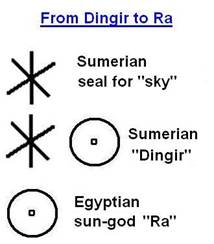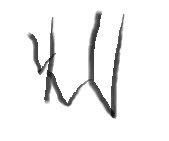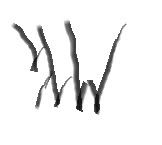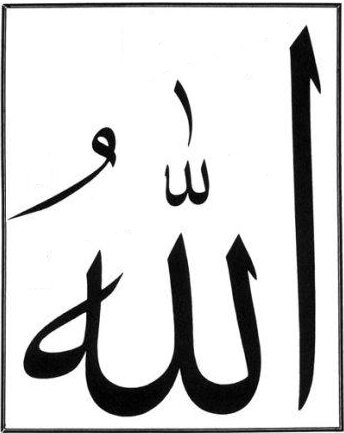|
|
Post by benzin on May 20, 2011 13:04:44 GMT 3
Interesting but these words with more or less the seme maning are in hungarian language too.
English - Volga Bulgar - Magyar
Yellow - sari - sarga
White - ak - agg (with the meaning of old, like agg szakál meaning old beard, white beard)
Blue - kök - kék
Wind - jel - szél (pronounce : sel)
|
|
|
|
Post by ancalimon on May 20, 2011 21:37:57 GMT 3
Interesting but these words with more or less the seme maning are in hungarian language too. English - Volga Bulgar - Magyar Yellow - sari - sarga White - ak - agg (with the meaning of old, like agg szakál meaning old beard, white beard) Blue - kök - kék Wind - jel - szél (pronounce : sel) We also have ak sakal meaning "old bearded- white bearded" in Turkish. We also say yashlı (yaşlı: old - aged - have many ages) In Turkish yel means "wind" but sel means "flood" We call the wind which blows from NorthWest "KaraYel": "Black Wind" |
|
|
|
Post by Ardavarz on May 21, 2011 0:04:37 GMT 3
Well, obviously they come from common Ural-Altaic roots.
|
|
|
|
Post by H. İhsan Erkoç on May 21, 2011 2:47:46 GMT 3
Actually this could mean a lot. And it could become "extremely controversial" concerning general spirituality around the world if everything is added together regarding this subject. For example this: hjp.srce.hr/index.php?show=search_by_id&id=f1lmWxg%3D&keyword=dairatur. daire ← arap. dā̕irä: krug What does krug in Arabic mean? What does it sound like? What were Arabs doing all around the Steppe? or: We call the pictured side of coins "TURA" in Turkey. is a Turkish loanword of Arabic origin in Croatian that passed into that language during the Ottoman period. There are many such Turkish words of Turkic, Arabic and Persian origin that passed to various Balkan languages during that time. |
|
|
|
Post by ancalimon on May 21, 2011 13:19:31 GMT 3
Actually this could mean a lot. And it could become "extremely controversial" concerning general spirituality around the world if everything is added together regarding this subject. For example this: hjp.srce.hr/index.php?show=search_by_id&id=f1lmWxg%3D&keyword=dairatur. daire ← arap. dā̕irä: krug What does krug in Arabic mean? What does it sound like? What were Arabs doing all around the Steppe? or: We call the pictured side of coins "TURA" in Turkey. is a Turkish loanword of Arabic origin in Croatian that passed into that language during the Ottoman period. There are many such Turkish words of Turkic, Arabic and Persian origin that passed to various Balkan languages during that time. Proto-Turkic: *deg- / *dög- / *dog- Altaic etymology: Altaic etymology Meaning: round Russian meaning: круглый Old Turkic: tegirmi (OUygh.) Karakhanid: tegirme (MK) Turkish: degirmi 'circle' Tatar: tügɛrɛk Middle Turkic: tekirme, tekirmi (Pav. C.) Uzbek: tụgarak Uighur: dügläk Sary-Yughur: doGɨr Azerbaidzhan: däjirmi Turkmen: tegelek, toGalaq Khakassian: toɣɨlax Shor: toɣalaq Oyrat: toɣoloq Chuvash: tǝʷgǝʷr 'mirror' Yakut: tüörem (poet.) 'round', tier- 'to turn round' Dolgan: tier- 'to turn round' Tuva: tögerik Tofalar: tȫrej Kirghiz: tegerek Noghai: tögerek Bashkir: tüŋäräk Balkar: tögerek Karaim: togerek Karakalpak: döŋgelek Do you think these got the word from Arabic via Ottomans too? How could it have originated in Arabic? Did the Arabs reach Yakutia? And why did they give the word daire to them? What is so special about it that Turks started using this word? ------------------ Here is what Haluk Berkmen wrote: Ra, the great god of the sun, appears to have occupied a prominent position in the Egyptian pantheon at a very early period. The Egyptians of later days appear to have thought that the name was in some way associated with creation. Sun-worship in Egypt was very ancient, and it is probable that a number of sun-cults became fused in that of Ra. Although almost all of the Egyptian deities had a half human half animal form, only Ra was an exception and was represented by the solar disc –a circle with a point in the center-. This representation has its roots in the early ON symbol of the Proto-language (see Chapter 7, The Minoan culture). I am of the opinion that Ra was imported from the Sumerian culture and his name came from Dingir, the main Sumerian deity. In the Sumerian pictographic writing system the sky was represented by a six-pointed star and the sun by a circle with a dot at the center. When the Sumerians wanted to write “dingir” they drew the two symbols next to each other, as shown below. Dingir was the sun-god residing in the sky. This way of writing Dingir was logical because the Sumerian language was agglutinative and words could be created by adding suffixes.  In fact Dingir comes from the Central Asiatic Ting-ri or Tengri, still existing as Tanrı in Turkish. Words similar to Tengri (meaning God) can be found in many remote parts of the world. Examples are: Tengeri for the Central Asiatic Buryat Turks, Tıngır for the Tartars of Crimea, Tanka for the North-American Indians, Tangaroa for the Pacific islanders, Tian for the Chinese and Tin for the Etruscans. The ancient Egyptians adopted the solar disc standing for the suffix –ri as the name of the sun-god and called it Ra, as shown below. Actually, not only Ra but also Horus is known to be related to the sun. Hor-us (Hor is) was adopted as the sun-god by the Romans during the Ptolemaic era. In time Hor became part of the Latin language and found its place in words such as “horizon”, “horizontal”, “horoscope” and even “hour” in English and “heure” in French. ... www.astroset.com/bireysel_gelisim/ancient/a22.htm------ Also after seeing the circle with a point in it (Sumerian Dingir), a word came to my mind. Mangır (money, coin)  tr.wikipedia.org/wiki/Mang%C4%B1r tr.wikipedia.org/wiki/Mang%C4%B1rI talked about TURA meaning the side of the coin with pictures. So there can also be kind of "value:DEĞER" meaning to this word. Or maybe some kind of relationship with "iron:DEMİR" I really would like to know everything that could be related to Tengri. |
|
|
|
Post by H. İhsan Erkoç on May 22, 2011 2:07:17 GMT 3
Nonsense.
|
|
|
|
Post by ancalimon on May 22, 2011 17:13:43 GMT 3
  "Kruh" (czech word) comes from Slavic "krug", which comes from proto-slavic krǫgъ. My etymology dictionary says it's related to old germanic "(h)ring", old islandic "hringr" and that they all come from IE word "krongh". (the PIE root is ker- "to turn") Interestingly, "krogu" in Proto Germanic means "pot", the same in Old High German is "kruog". Does the pronunciation of this Old High German "kruog" meaning "pot" sounds similar to English "clock" ? If that is the case, it looks related the dome shape of the bells. I don't know if it's Russian in origin or Turkic. Anyway, I think they both use it. The only words in Compendium of Turkic Languages by Mahmud of Kasgar that could be related are: Kol: sea, lake, puddle Qölik, Qölige: shadow Qol: The inclined part of a mountain that is between the peak and the valley (arm of the mountain) Oluq: something whose inside is hollowed out. (like a bell) We also have kolu komşu, konu komşu meaning "all the people living near each other, all the neighborhood. www.vipbells.com/kolokola.shtmlAlso the dress of Whirling Dervishes looks like a dome as well when they start turning. Maybe it is related to this dome shape of the sky and "turning" as well?
|
|
|
|
Post by ancalimon on May 26, 2011 4:31:17 GMT 3
This is my latest finding:  See that the Arabic "Allah" is the reflection of "Tengri" both vertically and horizontally. Write the Turkic word using calligraphy style using Orhun script and you get this:  Tried another variation:  Some kind of mirror-lens was used maybe? Like Leonardo Da Vinci style en.wikipedia.org/wiki/Mirror_writingWeird eh? Now that sajanjal gets a whole new meaning for me: steppes.proboards.com/index.cgi?board=board22&action=display&thread=1333Maybe "three mirrored:üç aynalý" or "three angled:üç açýlý"? Need to find more about this. This definitely is a lead. |
|
|
|
Post by merlkir on May 26, 2011 9:48:32 GMT 3
I don't think it does, really. Unlike the Japanese, we do hear the difference between R/L as quite a hard one. The vowels are also completely different, "g" at the end is a throat sound, while "ck" isn't.
I wouldn't say these are related.
|
|
|
|
Post by H. İhsan Erkoç on May 26, 2011 17:41:41 GMT 3
Ancalimon, did you know that smoking pot is hazardous for your health? It makes you hallucinate like this.
|
|
|
|
Post by benzin on May 26, 2011 19:31:00 GMT 3
ancalimon : When tengri is shown with one sign, its most common to be the sign of letter T, wich represent a symbol of I and W on the upper half of the I. (The second sign from the göktürk word you copied in).
It represents the bow and the axe, the bow represents the forest, and the axe represents the steppe. Now tell me how on earth would be the most ancient sign of the forest and the steppe be related with a religion came up in the 7th century in the desert ?
|
|
|
|
Post by merlkir on May 26, 2011 19:34:10 GMT 3
ancalimon : When tengri is shown with one sign, its most common to be the sign of letter T, wich represent a symbol of I and W on the upper half of the I. (The second sign from the göktürk word you copied in). It represents the bow and the axe, the bow represents the forest, and the axe represents the steppe. Now tell me how on earth would be the most ancient sign of the forest and the steppe be related with a religion came up in the 7th century in the desert ? Obviously, Islam is just Tengriism in disguise. At least that's what I gather Ancalimon is raving about. |
|
|
|
Post by Ardavarz on May 27, 2011 0:51:21 GMT 3
They have missed the initial Alif here.
And even if it wasn't just a casual similarity (the old Arabian Kifuc script has looked a bit different) it would mean a Satanic inversion of the divine name.
|
|
|
|
Post by ancalimon on May 27, 2011 2:26:49 GMT 3
ancalimon : When tengri is shown with one sign, its most common to be the sign of letter T, wich represent a symbol of I and W on the upper half of the I. (The second sign from the göktürk word you copied in). It represents the bow and the axe, the bow represents the forest, and the axe represents the steppe. Now tell me how on earth would be the most ancient sign of the forest and the steppe be related with a religion came up in the 7th century in the desert ? I don't know. That's what I'm trying to find found. They just look similar. Don't they? By the way.. What's the difference between these two?   |
|
|
|
Post by ancalimon on May 27, 2011 2:39:10 GMT 3
ancalimon : When tengri is shown with one sign, its most common to be the sign of letter T, wich represent a symbol of I and W on the upper half of the I. (The second sign from the göktürk word you copied in). It represents the bow and the axe, the bow represents the forest, and the axe represents the steppe. Now tell me how on earth would be the most ancient sign of the forest and the steppe be related with a religion came up in the 7th century in the desert ? Obviously, Islam is just Tengriism in disguise. At least that's what I gather Ancalimon is raving about. Actually it is the essence of Sufism which I relate with Tengrism. |
|